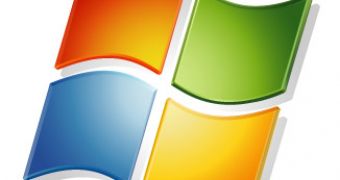Whether Steven Sinofsky, Senior Vice President, Windows and Windows Live Engineering Group, likes it or not, Windows 7 fresh out of Redmond's oven took the limelight away from XP SP3 and Vista SP1, as the service packs are still cooking. Microsoft is undoubtedly translucent to perfection on Windows 7... Well, not entirely. But as coders know... perfection is never achievable. This principle of building code also applies to translucency.
So, Windows 7 Ultimate edition Build 6.1 (Build 6519.1.x86fre.winmain.071220-1525) ISO 6519.1.071220-1525 is out and about. And leaked screenshots, videos and even torrents have been made available to the public. The Redmond company did manage to stir up some confusion, by claiming that Windows 7 was still in its planning phase. In this context, the three-year timeframe that Microsoft said would separate Vista from Windows 7, now delivered the next version of Windows in 2011. Not such a great perspective.
But as far as Microsoft is concerned, planning actually means building. The Redmond company has been developing Windows 7 throughout 2007, but as early as 2006? When Kevin Kutz, Director, Windows Client, explained that Microsoft would not talk about Windows 7. On February 13, 2007, he stated: "we are not giving official guidance to the public yet about the next version of Windows, other than that we're working on it." And this was just two weeks after Windows Vista hit the shelves.
"It's not a state secret that we're in the early stages of development for the next version of Windows (given the internal name of Windows '7'). The specifics of what comes next are always the subject of fevered and sometimes inaccurate speculation, but you can be sure that we're not resting on our laurels. Windows is one of the most complex and sophisticated pieces of software in existence, and since it's about the most widely-used piece of software on the planet, it's a pretty exciting project to be working on. (...) For obvious reasons (Sinofsky can't you please let Tim be transparent? Just Tim! We promise he's enough, you can have all the other on the Windows project translucent, but just give us Tim - pretty please...), I'm not able to write anything about what's coming in Windows '7'," stated Tim Sneath, Microsoft group manager for client platforms.
David Overton, ISV Partner Account Manager at Microsoft, has revealed that traditionally Microsoft debutes work on a new platform even before the old one is over. In this context, the development of Windows 7 started before November 08, 2006, the day that Jim Allchin, former Co-President, Platform and Services Division, said: "it's time!", announcing the releasing to manufacturing (RTM) of Vista.
Windows 7 "like every other version of Windows starts life before it's predecessor is finished, changes several times before is released and solves some of the issues people have with Vista as well as taking the product in new directions. This is not new or news inside Microsoft and excitement because we are working on the next Windows should be tempered - we are always working on the next version of Windows, Office and every other product we do (well, perhaps not Bob v2)," Overton stated.
One of the arguments that are being used to prove that Windows 7 does not in fact exist, and that all the materials on it are fake, is the operating system's resemblance to Vista in terms of graphical user interface. This is in fact how all Windows versions start along. The new GUI is among the last details to be implemented.
"As people who were 'in' early with Vista, the visual changes happen much later in the product lifecycle and under the hood changes can make a huge difference in things like performance, security and reliability while not being 'seen' by anyone," Overton added.

 14 DAY TRIAL //
14 DAY TRIAL //